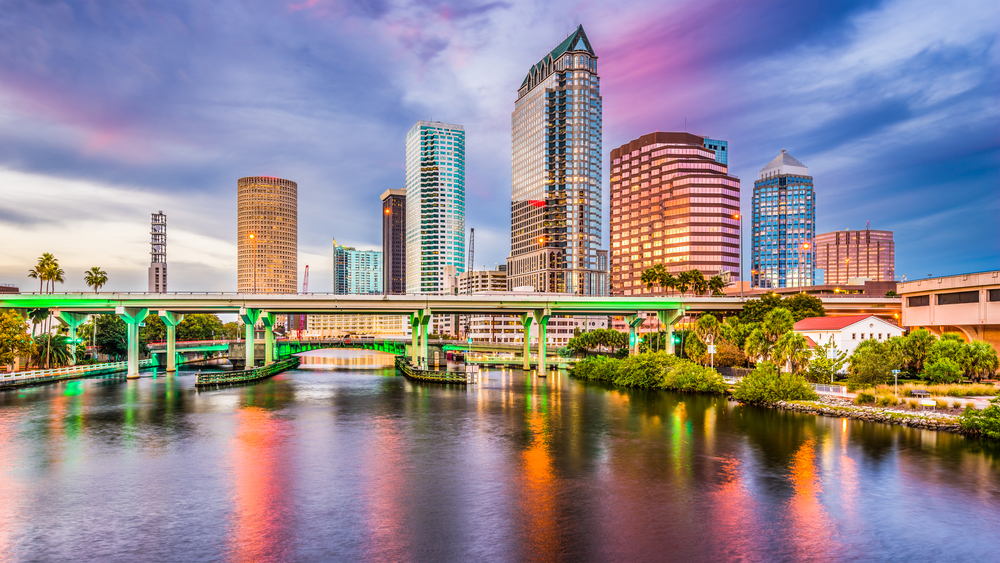“Quite simply, these states reopened before it was safe to do so—there was still frequent community transmission, measures to reduce transmission were not implemented (physical distancing requirements and masks in public places), and there were not sufficient test-and-trace capabilities in place,” Angela Rasmussen, PhD, a virologist at Columbia University in New York City, recently told Best Life. Now, Rasmussen is saying at least five additional states should consider doing the same. The criteria used to form this opinion? “Anywhere that case counts are beginning to tilt up, especially if that upward shift can’t be explained by increased testing, should consider re-instituting stay-home measures,” Rasmussen said. Read on to see which states she’s most concerned about. And for more on the states seeing surges, check out 6 States Where Coronavirus Numbers Are Spiking. Florida’s coronavirus hospitalization count has nearly doubled since restaurants and retail stores were allowed to reopen at 25 percent capacity on May 4, CBS News reported on June 17. The Florida Department of Health also reported just over 2,600 new cases Wednesday, the second largest spike in the state yet.ae0fcc31ae342fd3a1346ebb1f342fcb Despite the rising rates of hospitalizations and new cases, Gov. Ron DeSantis said he would not reinstate lockdown orders. However, some restaurant and bar owners have shut down their businesses on their own accord in order to stop the spread. And to learn more about where COVID cases are spiking, check out 6 States That Just Set Their Daily Record of New Coronavirus Cases. The Los Angeles Times reported on June 17 that California health officials released a statement saying that while rising numbers of new cases is an important metric, it is the number of hospitalizations that tells the more accurate story of where the state is in terms of stopping the spread. And according to the paper’s data analysis, after statewide hospitalizations remained flat for several weeks, they have started to rise in certain parts of California—forcing lawmakers to consider slowing further reopening plans if things don’t improve. “We have met the enemy, and they are us,” Robert Levin, MD, the health officer in Ventura County—where hospitalizations are up 75 percent this week—told the Los Angeles Times. “And many of us have to do a better job of social distancing and quarantine. Some of us are doing a great job; we’re stalwarts. If we can do this—and I know we can—we can prevent the state from telling us that we must take a step back from some of the gains we’ve made in opening our activities and businesses.” Since Texas started its reopening on May 1, CBS News reported on June 17, at least 12 restaurants in and around Houston have announced temporary shutdowns to sanitize their establishments and test employees due to concerns over the recent surge of new cases. And on Tuesday, the state health department reported an 8.3 percent increase in hospitalizations to a record 2,518—the largest daily jump since June 4. Things are escalating so quickly in Texas that nine of the state’s mayors, including those in Houston, Dallas, Austin, and San Antonio, have pushed Gov. Greg Abbott to grant them the authority to make face masks mandatory “where physical distancing cannot be practiced,” CNN reported. As of the afternoon of June 17, no such authority has been officially authorized. And for the states where face masks are required, check out The 10 States With the Strictest Face Mask Laws According to the Arkansas Department of Health, 415 new COVID-19 cases were reported in the state on June 17, bringing Arkansas’ total up to 13,606. The increase follows the commencement of phase two of reopening on June 15, which allows restaurants and businesses to fill up to two-thirds of their capacity, moving from the one-third capacity that was allowed during the initial phase of Arkansas’ reopening plan. Also on June 15, a data model from the University of Arkansas for Medical Sciences forecasted that deaths and hospitalizations would continue to increase in the state into October, far longer than experts initially predicted. “What the model is saying instead is, ‘all things considered, or if conditions at this time do not change, this is what could happen,’” Mark Williams, PhD, dean of the College of Public Health, told a local CBS News affiliate. On June 16, the Alaska Department of Health and Social Services reported a total of 753 cases in the state, including 12 new cases, which was a significant jump compared with three new cases reported the day prior. The Anchorage Daily News reports that test results may have been delayed momentarily, potentially accounting for the lack of new cases on June 15. But the state also reported 29 new cases on June 13, its daily record since the pandemic began. And for more up-to-date information, sign up for our free daily newsletter.
